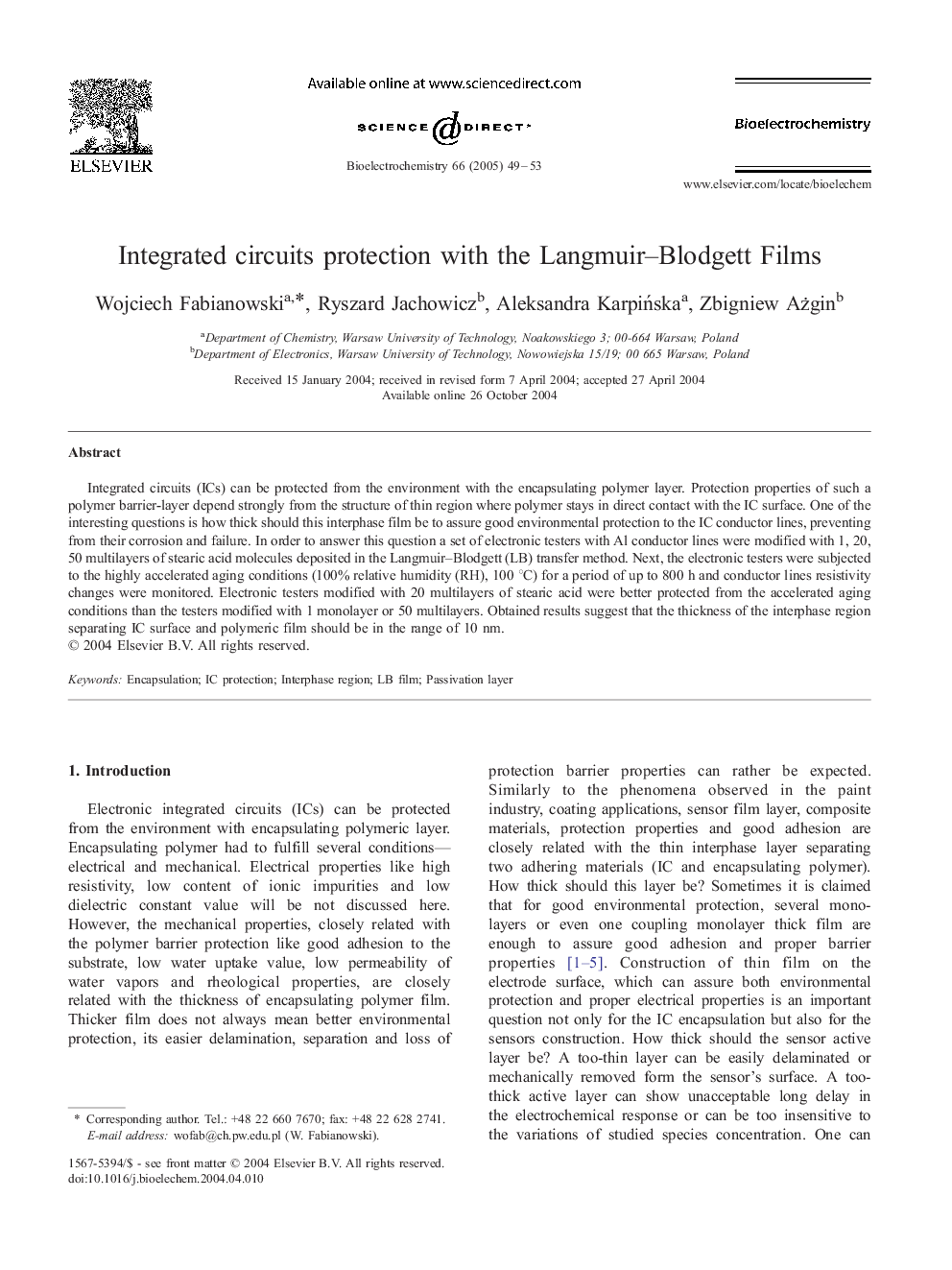| Article ID | Journal | Published Year | Pages | File Type |
|---|---|---|---|---|
| 9758940 | Bioelectrochemistry | 2005 | 5 Pages |
Abstract
Integrated circuits (ICs) can be protected from the environment with the encapsulating polymer layer. Protection properties of such a polymer barrier-layer depend strongly from the structure of thin region where polymer stays in direct contact with the IC surface. One of the interesting questions is how thick should this interphase film be to assure good environmental protection to the IC conductor lines, preventing from their corrosion and failure. In order to answer this question a set of electronic testers with Al conductor lines were modified with 1, 20, 50 multilayers of stearic acid molecules deposited in the Langmuir-Blodgett (LB) transfer method. Next, the electronic testers were subjected to the highly accelerated aging conditions (100% relative humidity (RH), 100 °C) for a period of up to 800 h and conductor lines resistivity changes were monitored. Electronic testers modified with 20 multilayers of stearic acid were better protected from the accelerated aging conditions than the testers modified with 1 monolayer or 50 multilayers. Obtained results suggest that the thickness of the interphase region separating IC surface and polymeric film should be in the range of 10 nm.
Related Topics
Physical Sciences and Engineering
Chemistry
Electrochemistry
Authors
Wojciech Fabianowski, Ryszard Jachowicz, Aleksandra KarpiÅska, Zbigniew Ażgin,
